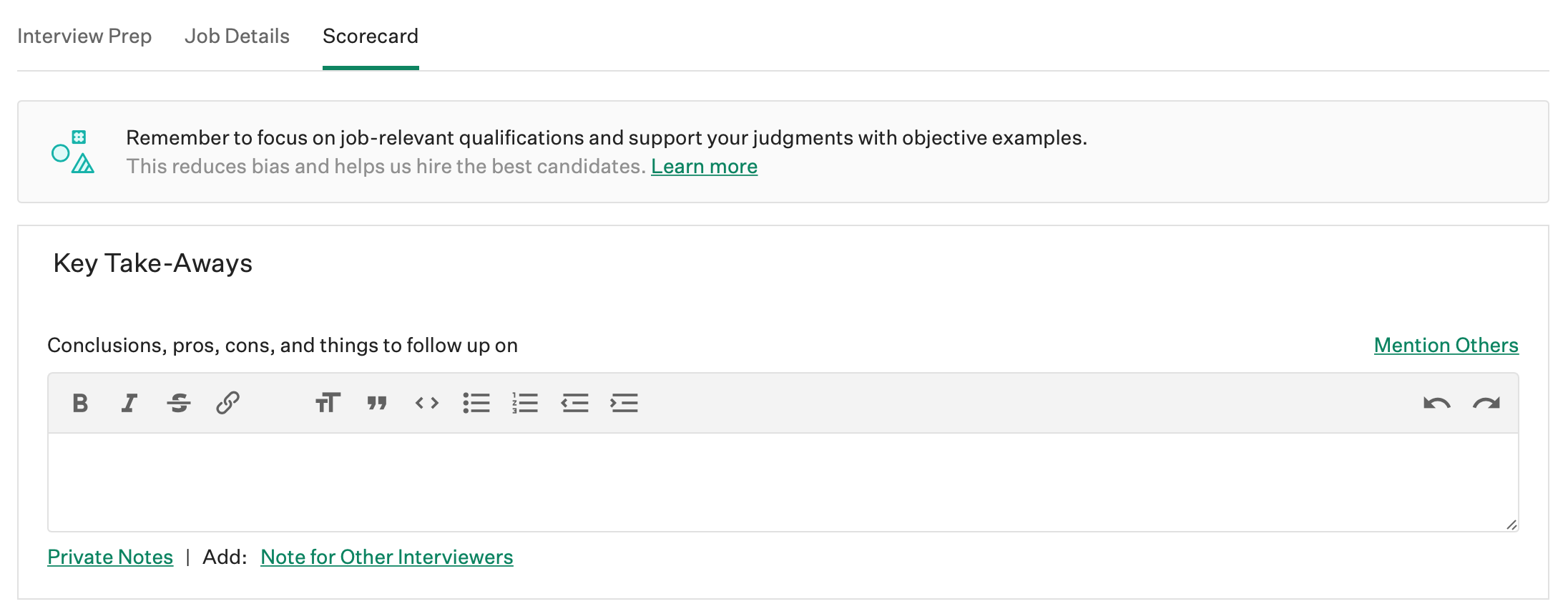A cornerstone of Greenhouse Recruiting is to provide tools to help organizations make structured hiring decisions. The DE&I feature set builds upon this philosophy by enhancing structured processes to guide decision-making and reduce the influence of unconscious bias. For example, when assessing candidates for hire, interviewers tend to shift decision criteria when they don’t have predetermined attributes to focus on.1 This shifting introduces bias and subjectivity in the process, allowing for things like gender and racial stereotypes to impact the decision.
Unconscious bias is particularly likely to influence the hiring process when decisions are made quickly. Since moving quickly increases cognitive load, evaluators might unconsciously use mental shortcuts that overemphasize information that may not be relevant to a candidate's qualification for a job.2 For example, even just the name on a resume—whether it is male or female,3 or whether it is a prototypically White-sounding or a prototypically Black-sounding name—can have a significant impact on how candidates are evaluated.4
Strategies and tools
By creating a list of clearly defined qualifications and providing this list to interviewers, your organization can build consistency and objectivity into your hiring decisions.5 Likewise, asking interviewers to provide reasons for their decisions prompts them to slow down, and increases accountability. Simply prompting interviewers to record reasons for their hiring recommendation can help mitigate bias.6
Greenhouse Recruiting provides a suite of features to help your organization articulate and consistently apply important criteria for a job throughout the hiring process based on the cited research. Moreover, using select features, interviewers can be forced to justify the decisions throughout the hiring process. For example, activate an "inclusion nudge" that will appear when an interviewer is filling out a scorecard.

Likewise, using Greenhouse Inclusion, you can require interviewers to record explanations when scoring attributes.

For more information on additional DE&I features, check out the links below.
1. Uhlmann, E. L., & Cohen, G. L. (2005). Constructed Criteria Redefining Merit to Justify Discrimination. Psychological Science, 474-480. Retrieved from http://www.socialjudgments.com/docs/Uhlmann and Cohen 2005.pdf
2. Rivera, L. A. (2015). Pedigree: How elite students get elite jobs. Princeton, NJ: Princeton University Press; Shleifer, A. (2012). Psychologists at the Gate: A Review of Daniel Kahneman’s Thinking, Fast and Slow. Journal of Economic Literature, 50(4), 1-12. doi:10.1257/jel.50.4.1
3. Moss-Racusin, C. A., Dovidio, J. F., Brescoll, V. L., Graham, M. J., & Handelsman, J. (2012, October 09). Science faculty's subtle gender biases favor male students. Retrieved from http://www.pnas.org/content/109/41/16474.
4. Bertrand, M., & Mullainathan, S. (2004). Are Emily and Greg More Employable than Lakisha and Jamal? A Field Experiment on Labor Market Discrimination. The American Economic Review. doi:10.3386/w9873
5. Bohnet, I. (2016, July 18). How to Take the Bias Out of Interviews. Retrieved from https://hbr.org/2016/04/how-to-take-the-bias-out-of-interviews.
6. NCSC.org (2012). Strategies to reduce the influence of implicit bias. Retrieved from http://www.iowanebraskanaacp.org/wp-content/uploads/2017/09/implicitbias.pdf.